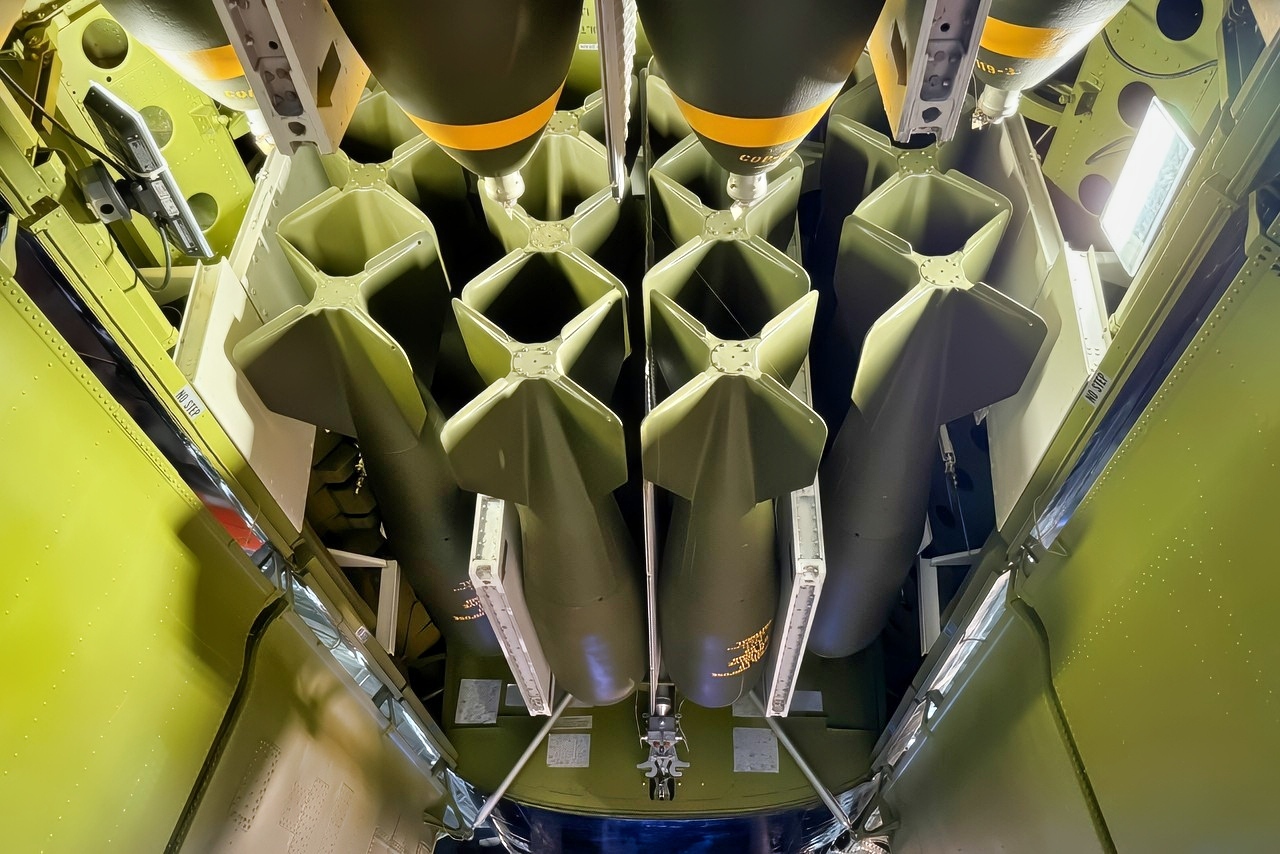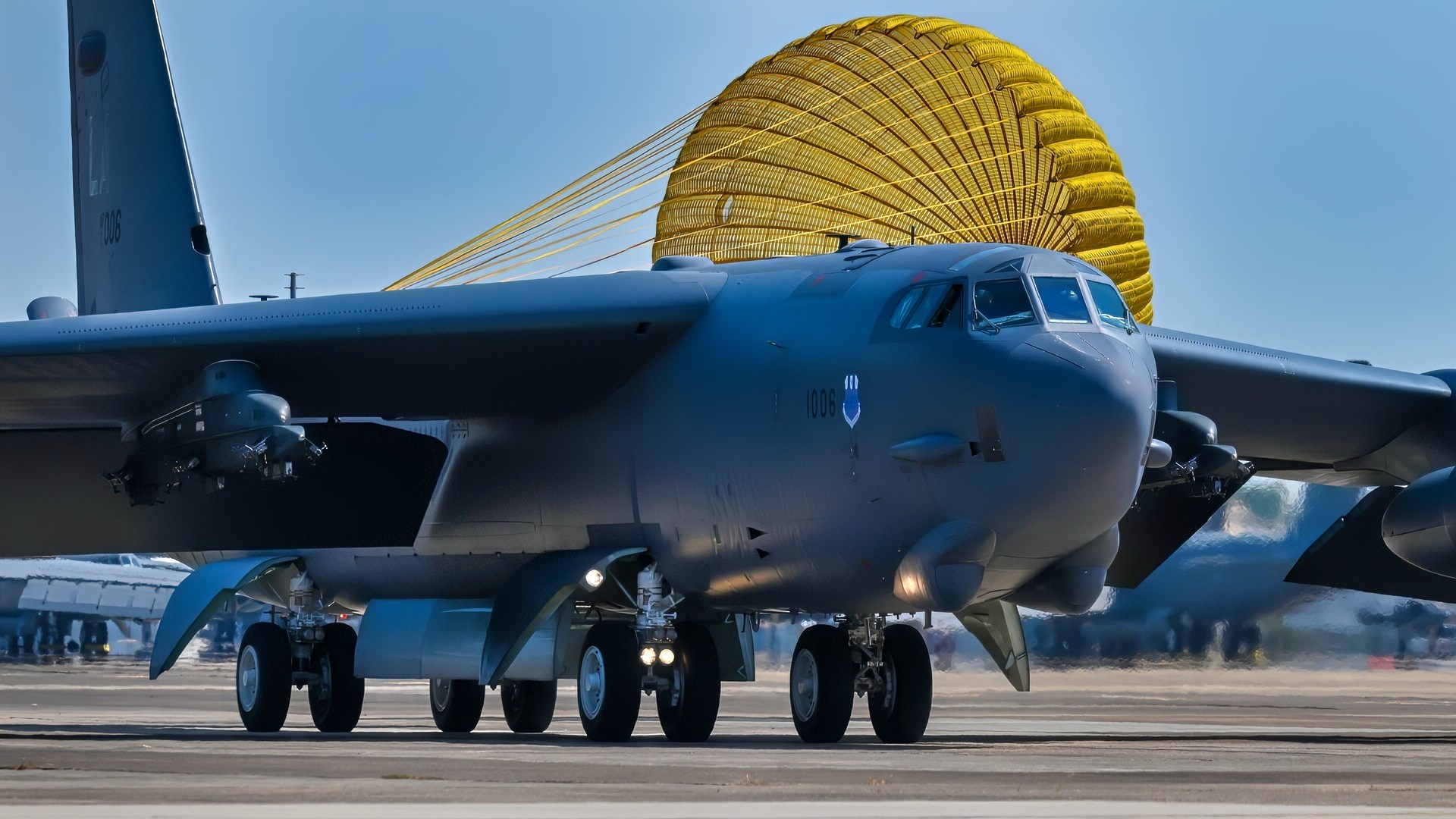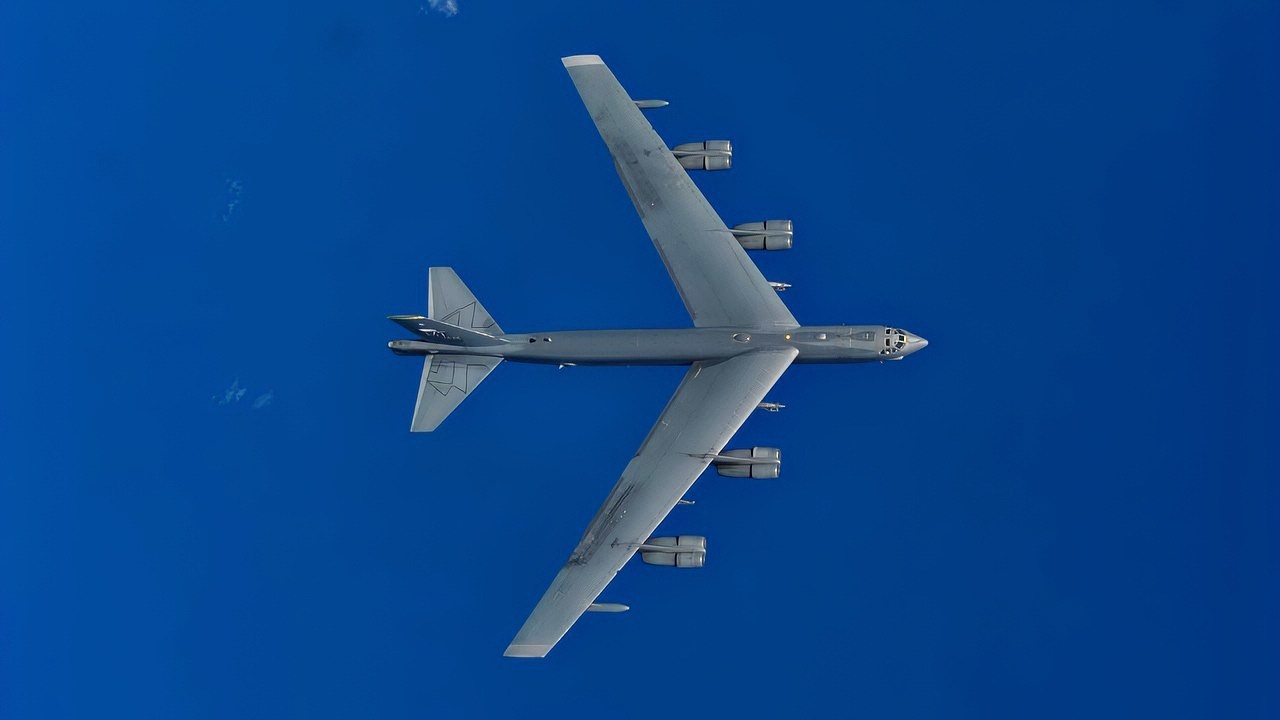Key Points and Summary – Six decades on, the B-52H is deadlier thanks to a wholesale refit: F130 engines for range and reliability; CONECT and JREAP networking; refreshed internal bays for modern PGMs; and advanced targeting pods for all-weather CAS or deep strike.
-Its role isn’t stealth penetration—it’s stand-off dominance.

U.S. Air Force B-52H Stratofortress aircraft fly by the 81st Liberation Day Parade, leveraging a training sortie during the U.S. Air Force’s 2025 Department-Level Exercise series in Guam, July 21, 2025. The flights consisted of 13 waves of aircraft from the U.S. Air Force, Royal New Zealand Air Force, Japan Air Self-Defense Force and Republic of Korea Air Force, showcasing the U.S. and its allies’ commitment to a free and open Indo-Pacific region. The DLE encompasses all branches of the Department of Defense, Allies, and partners, employing over 400 joint and coalition aircraft and more than 12,000 personnel across more than 50 locations spanning 3,000 miles. (U.S. Air Force photo by Senior Airman Jade M. Caldwell)
-The incoming nuclear LRSO replaces the AGM-86B, letting BUFFs launch from well outside enemy air defenses while sustaining the triad.
-A trimmed four-person crew and upgraded EW ease workload and survivability. Beyond land attack, the bomber mines sea lanes, kills ships, and surveils oceans—making it a flexible partner to B-2 and B-21 in the Indo-Pacific.
Upgraded B-52H Is More Lethal Than Ever
What is the secret of the B-52 program?
How is this gargantuan bomber still flying after all of those decades in operations around the globe? I always remember the B-52 for its actions in the Vietnam War, such as Operation Linebacker II or Operation Arc Light.
The loud explosions often alerted soldiers and marines that the B-52 was carpet bombing targets to oblivion.
The Vietnam War movie Apocalypse Now features one memorable scene of a B-52 Arc Light strike that shook the ground and rumbled menacingly.
The modern B-52H Stratofortress can fly at 50,000 feet at ample subsonic speeds. It is not stealthy, but it doesn’t have to be, given its ability to fire stand-off missiles beyond enemy air defense range. The B-52H is also nuclear-capable, making it an essential leg of the U.S. nuclear triad.

Bombs Inside the B-52 Bomber. Photo taken by Harry J. Kazianis/National Security Journal.
I Bet You Didn’t Know It Has Naval Capabilities
One somewhat unknown aspect of the B-52H is its helpfulness in U.S. naval operations. The Stratofortress can destroy ships and even lay mines. “In two hours, two B-52s can monitor 140,000 square miles (364,000 square kilometers) of ocean surface,” the Air Force claims.
Combat Exploits Are Unmatched
Its war record is unmatched. The B-52H was an Operation Desert Storm stalwart. It conducted numerous strike missions that accounted for 40 percent of all ordnance dropped during the First Gulf War.
During the Global War on Terror, the B-52H was equally effective. It was a friend to soldiers and marines on the ground who benefited from B-52 close air support strikes and the elimination of reinforced targets underground or in caves.
“B-52s are equipped with advanced targeting pods. Targeting pods provide improved long-range target detection, identification and continuous stabilized surveillance for all missions, including close air support of ground forces. The advanced targeting and image processing technology significantly increases the combat effectiveness of the B-52 during day, night and less than ideal weather conditions when attacking ground targets with a variety of standoff weapons (e.g., laser-guided bombs, conventional bombs and GPS-guided weapons),” the Air Force explained in an official profile.
Extensive Upgrade Program
B-52Hs have received many upgrades over the years. There is the Joint Range Extension Applications Protocol (JREAP) to connect with and facilitate data transfer from satellites for more effective navigation and targeting.
The Combat Network Communications Technology (CONECT) update replaced the old Vietnam-era cockpit controls. CONECT enables a “moving map” and “new displays at all crew stations, Link 16, and machine-to-machine beyond-line-of-sight tasking/re-targeting,” according to Aviation Today.
The internal weapons bays have been improved. This gives it a much more valuable payload for modern precision-guided munitions.
The Commercial Engine Replacement Program has been the most significant improvement for the B-52H. This swaps out the bomber’s eight Pratt & Whitney TF33-PW-103 engines, with more modern Rolls-Royce F130s.
The New Software Makes the Magic Happen
Over the years, the B-52H has also been equipped with more advanced, efficient software to control CONECT and JREAP. Without these additions, the B-52H would rely on older analog controls, which would negatively affect mission effectiveness.
The B-52H also has one less crew member, dropping from five to four. There used to be a dedicated electronic warfare officer ,but that person’s duties are now shared among the other airmen and officers.
Long-Range Standoff Weapon Is a Difference Maker
One weapon the B-52H now deploys is the Long-Range Standoff Weapon (LRSO). This is specifically designed for what will become what I call the “kinetic missile fight” in the Indo-Pacific. This allows the B-52H to remain out of range of enemy fire and airplanes.
This month, the Aviationist reported a non-military photographer capturing an image of the LRSO on a B-52H.
The giant bomber was flying lower and faster than usual.

A B-52 Stratofortress from the 2nd Bomb Wing returns home to Barksdale Air Force Base following a Bomber Task Force mission at Andersen Air Force Base, Guam, Aug. 20, 2023. BTF missions demonstrate the credibility of the United States forces to address a global security environment that is more diverse and uncertain than at any other time in history. (U.S. Air Force photo by Airman 1st Class Seth Watson)
The LRSO is nuclear-capable, and this could have been a training exercise for notionally delivering a weapon of mass destruction.
The LRSO will replace the older AGM-86B Air-Launched Cruise Missile. The LRSO should be fully deployed by 2030.
This is good news for President Donald Trump’s national security team, which wants to make nuclear weapons more of a priority in its new strategy doctrine. Trump has already ordered an ICBM test this month and wants to keep adversaries guessing about his battlefield inclinations.
This is a “Trumpesque” use of nuclear doctrine. He does not want to be as predictable as President Joe Biden was, and the B-52H and the LRSO will enable the U.S. Department of Defense to make his nuclear forces more robust, thereby maximizing deterrence.
The B-52H is a stunning airplane. Over 60 years of use in one battle after another has made this bomber a symbol of American global reach and firepower. The LRSO is the most significant addition to an airplane that was already excellent.
The connection to satellite data will help the LRSO hit targets with high accuracy, and battle damage assessment will be improved.
The Electronic Warfare capabilities have been enhanced, and more powerful engines have been added.

Military service members, veterans, and citizens of Guam gathered for the Memorial Day Commemoration at the Guam Veterans Cemetery. The Ceremony consisted of a fly over from a B-52H Stratofortress, a musical performance from the Guam Territorial Band & Cantate, guest speaking from the honorable Eddie Baza Calvo, a Fallen Soldier Gravesite Tribute, and the playing of Taps. (U.S. Marine Corps photo by Lance Cpl. Jacob Snouffer/Released)
You can’t keep the B-52H program down. This airplane has a combat history to make many war buffs take notice, and the new upgrades are simply marvelous.
The B-52H is still relevant, and its nuclear weapons deployment will be second to none with the LRSO. This bomber will be a good complement to the B-2 Spirit and the B-21 Raider and will live to serve for more decades to come.
About the Author: Brent M. Eastwood
Brent M. Eastwood, PhD is the author of Don’t Turn Your Back On the World: a Conservative Foreign Policy and Humans, Machines, and Data: Future Trends in Warfare plus two other books. Brent was the founder and CEO of a tech firm that predicted world events using artificial intelligence. He served as a legislative fellow for US Senator Tim Scott and advised the senator on defense and foreign policy issues. He has taught at American University, George Washington University, and George Mason University. Brent is a former US Army Infantry officer. He can be followed on X @BMEastwood.
More Military
‘Skipper, We Have Been Hit’: Tiny Nuclear Sub ‘Sank’ $4.5 Billion U.S. Navy Aircraft Carrier
China’s Military ‘Quantum Leap’ Doesn’t Add Up
Russia’s Air Defenses Are Springing Leaks—and Ukraine Is Exploiting Them
Japan Might Be Ready to Fight for Taiwan. Would America Do the Same?










